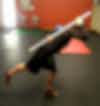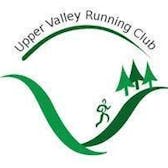Running Injury Prevention
By: Eric Ellingson
Injury Prevention notes from BE Fit Physical Therapy
There is an endless supply of running exercises and advice out there on the internet at this point. How do you make sense of it all and decide what to listen to? It can be hard to be a critical consumer, seeing who is posting the advice and based on what evidence or experience. It’s also important to consider what best applies to you, in your particular situation - taking into account age, mileage, goals, past injuries, etc. I am happy to share my thoughts, and what they are based on. First off, yes, I am a middle aged runner, relatively light mileage, and only “recreationally” participating in local road and trail races 5 and 10ks up to a few half marathons. I’ve had some running and sports injuries over the years so I can relate from that perspective. More importantly, however, I have been a physical therapist treating runners and other active adults and teens for almost 25 years, including 13 years as an owner of BE Fit Physical Therapy here in the Upper Valley. I keep up with the research on running injuries and injury prevention, and give talks each year on running injury prevention providing training tips and specific exercises. So provided below are a few of my “best tips” for how to avoid or minimize running injuries through smart training, and a few of my favorite exercises for runners.
That said, I do have to provide one disclaimer: As referenced above, every runner is different and we all have unique strengths and weaknesses! Therefore there is not any one perfect exercise for every one of you reading this. So if you have struggled with or are having trouble with an injury now, the best advice is to see a physical therapist familiar with treating runners, and find out what specific exercises are best for your particular situation.
2) Respect the easy days
The intensity of most of your runs should be conversational. Training with HR zones, or with pace calculators, is really crucial to avoiding pushing too hard. There are a lot of in-depth resources for exactly how much to train how hard depending on your goals, but I can tell you that most recreational runners spend way too much time in the higher/more difficult zones. You should really only be doing pace work 1-2x/week for most people. Don’t feel guilty for “going easy” - it’s what builds your base, conditions your joints and ligaments, and allows you to push hard when needed.
3) Strength training
Many runners are resistant to strength training, worrying about “bulking up” (if only it were that easy!) or convinced it is unnecessary. A 2014 review looked at >3,400 studies, selected the 25 highest quality, encompassing 26,000 athletes. Strength training was shown to reduce the risk of traumatic injury by 66%, and the risk of repetitive injury by almost 50%. Think on that for a minute: Cut your likelihood of injury in half by strength training. A 2018 review including 24 studies showed that strength training in runners resulted in increased time trial performance, improved anaerobic speed measures, and a 2-8% increase in running economy. Sign me up!
4) Cross training
No matter how much you like to run, it’s important to mix in some other cardiovascular exercise. Our bodies suffer if they always move in the same patterns, day after day, month after month. Most running injuries are repetitive stress, so one of the best ways to reduce this is to vary your activity some throughout the week, and throughout the year. Add in some cycling, rowing, swimming, skiing, multidirectional sports - anything to break up those patterns.
5) Reduce impact forces
This one gets a little more complicated, but many studies show that reducing impact forces at initial contact/ landing is also correlated with reduced injury risk. Exactly how to reduce this is more controversial, and less clear in the research. Generally speaking however, at any given running speed: a slightly higher cadence, slightly shorter stride, landing with your foot a bit closer to you, all reduce the impact forces that translate up through the leg. Don’t go out tomorrow and run three miles on your toes with a high cadence (unless you want a calf/ achilles injury), but gradually changing some of these variables can reduce your risks.
6) If your body hurts, listen to it!
Most importantly, make sure you are listening to your body. Take a rest day when you are sore. If the same body part has been hurting for more than a week or two, take some time off (more cross training!), or call a physical therapist to get evaluated.
Strength Exercises
Generally, one-leg support strengthening is very important for runners (vs two-leg support with standard squat, lunge, etc). Again, everyone is different, but key areas that we commonly find people lacking in strength are the gluteus medius (side of the butt, keeps your hips level and your knee from caving in when on one leg) and the calves (important for propulsion, shock absorption, hills, trails… everything!). Therefore here are a few of my favorites for runners:
Hip and Core Controle: RDL/Hip Hinge
** Keep three points of contact with the stick throughout exercise- head, mid-back, sacrum. Stance knee is soft, not locked. Hips stay facing forward (don’t twist). Gently hinge forward from the waist keeping weight through the stance leg heel primarily. **
Goal: x10 reps, slow and controlled, maintaining alignment.
Easier: Go less deep. Allow light fingertip support for balance. Reach down to touch a chair or stairs for balance.
Harder: Go lower. Reach with your hand (opposite side you are standing on), but still keep your spine straight. Add a weight in that same hand.
Lateral Hip Strength: Side Plank From Knee
** Lie on side, supported on forearm and outside of the knee. Don’t let hips/body roll forward or back.
Then lift the top leg off straight up towards the ceiling.
Do not let hips sag - keep the body in a straight line.**
Goal: x10 leg lifts or 15-30 second holds.
Easier: Keep knees together. Work on lifting up and down from the floor (not holding).
Harder: Longer holds; raise top arm up, or add forward/back reach/trunk rotation with top arm/leg. Support on ankle not knee of lower leg.
Calf strength: Single Limb Heel Lift
**Using fingertip support for balance, perform one-leg heel raises until fatigued. Slow up & down.** PERFORM SETS WITH KNEE STRAIGHT, AND AGAIN WITH KNEE BENT.
Goal: More than 20 reps (30 reps for distance runners) through full height, able to perform off 1-2” step. Easier: use other foot or hands for slight assist.
Harder: Add weight to achieve fatigue at 8-12 reps
A Couple of Tidbits on Stretching
This one really depends on the person even more than strength work - different people are tight in different areas. Key areas for all runners to maintain flexibility are the hip flexors (to be able to get a good stride behind you and avoid back pain) and the calves (avoiding sprains and calf strains). Another note - if your hamstrings are always tight after a run, it’s more likely to be a weakness issue than a tightness issue. Minimal hamstring flexibility is required for a normal running gait, but your hamstrings will definitely feel tight post-run if you lack strength or endurance in them.
In general, dynamic warmups / quick stretches are great as warmups. Save the longer hold static stretches for after a run and other times, to work on the areas where you need to improve mobility.
Thanks for sticking with me! It’s hard to stay brief on a topic where I have so much to say. =)
Remember: From the literature, almost 50% of runners experience some type of injury each year - you are not alone! Have patience with your body, and seek out help if things are not getting better.
Happy running -
Eric Ellingson
BE Fit Physical Therapy









